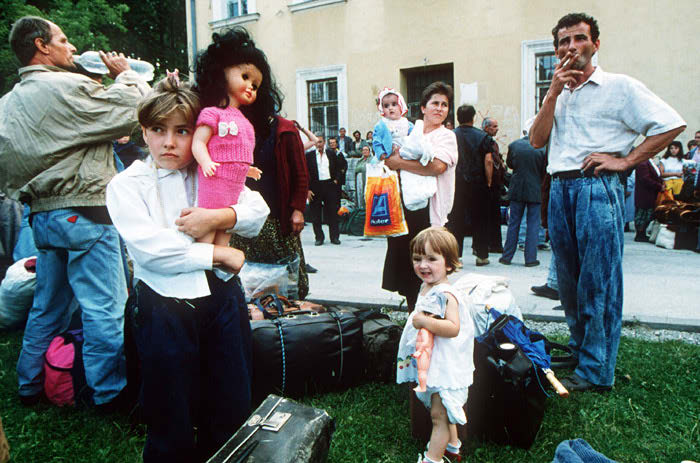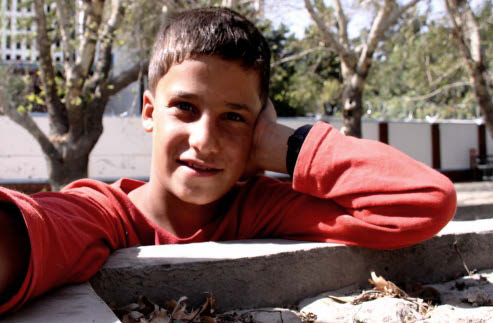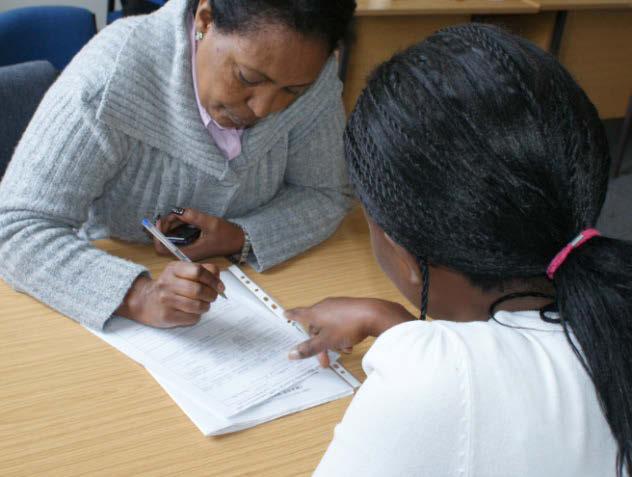Introduction
This module will give you a more sophisticated understanding of the cultural factors which may influence safeguarding for migrant communities.
You are not expected to be an expert by the end of this training.
The issues covered in the following units are designed to give you an introduction to particular types of child protection concern and a brief overview of the factors which can influence safeguarding in migrant communities.
What is safeguarding?
 Safeguarding and promoting welfare is...
Safeguarding and promoting welfare is...
- everything that contributes to children and families being able to thrive
- about prevention and positive impact as well as child protection
- should inform all professional practice
Child protection...
- takes place when a concern or issue is identified and acted upon
- this may address intentional or unintentional harm
Safeguarding situations
Identify which of the following situations describes a safeguarding situation:
1. A health visitor speaking to a father about weaning.
Safeguarding situation
Not safeguarding situation
2. A Macmillan nurse helping a family with a form about disability benefits.
Safeguarding situation
Not safeguarding situation
3. A local Imam speaking to families about breastfeeding and fasting during Ramadan.
Safeguarding situation
Not safeguarding situation
4. A midwife speaking to a mother about post natal depression.
Safeguarding situation
Not safeguarding situation
5. A GP writing a letter in support of a housing application.
Safeguarding situation
Not safeguarding situation
6. A youth worker signposting teenagers for contraceptive advice.
Safeguarding situation
Not safeguarding situation
All of these situations promote the safeguarding of children and families.
All professionals play an important role in safeguarding.
In his 2003 report into the death of Victoria Climbié, Lord Laming raised concerns that:
"failure ... may have been partly due to ... losing sight of the fact that her needs were the same as those of any other seven-year-old girl, from whatever cultural background."
Lord Laming, The Victoria Climbié Inquiry (2003)
It is important to appreciate the following:
- Individuals and families from migrant communities need the same basic health care and social support as others living and working in the UK.
- Safeguarding issues within migrant communities are not greater or worse than those in the general UK population.
- Migrants from some communities may be unaware of their basic rights and obligations under employment law, for education, health and social care.
Cultural sensitivity
Cultural sensitivity should be practiced by any professional no matter who they are working with.
With this in mind, the following key considerations can help guide our understanding of, and action to safeguard people from abuse.
Working competently and sensitively
- Local agencies and institutions must work to minimise the risk of harm, by building trust and understanding with local communities.
- All people working or in contact with children and vulnerable adults have a responsibility to recognise and know how to act to keep people safe.
- People working with children and vulnerable adults should always take advice whenever they feel it is required.
- Child abuse is never acceptable in any community, in any culture, under any circumstances.
- Standard child safeguarding procedures apply and must always be followed.
Remember that...
Robust local partnerships advance early identification and safeguarding.
Whilst it is not generally the role of safeguarding agencies to judge beliefs, there are some practices that local partnerships need to expose, challenge and stop.
The following video discusses cultural competency: what it is and what it is not, and how understanding personal cultural influences can inform our work with others:
Informed practice
“The Victoria Climbié inquiry highlighted how easy it is for vulnerable families to fall through the net, especially if they do not have English as a first language and are highly mobile”
Karen Buck, Labour MP, 2003
Whilst it is important to be culturally sensitive to unique needs and backgrounds, it is also important to be aware of some of the particular problems that may be presented.
Some forms of abuse are linked to specific communities but these are relatively small instances when considered in relation to the abuse of children across the UK.
If you have concerns about the welfare of an individual or family in your care you should always follow the policy within your own organisation and allow ‘The 3Rs’ (see Unit 5) to guide you in how to react.
"Cultural differences in the way families rear their children should be. . . respected, but where child abuse does occur it should be understood that this particular family has gone beyond what is acceptable not only in the British culture, but in their own."
Chand, 2000
Vulnerability: who is a vulnerable adult?
The 1997 consultation paper, ‘Who decides?’ issued by the Lord Chancellor’s department states:
- A person over 18 who is or may be in need of community care services by reason of mental or other disability, age or illness...
- and is or may be unable to take care of him or herself ...
- or is unable to protect him or herself from significant harm or exploitation
So, which of the individuals below are ‘vulnerable adults’? Identify those you think would be classified ‘vulnerable’ from the information given.
1. Firat, who has arrived in the UK with no financial support or documentation to claim asylum
Vulnerable adult
Not a vulnerable adult
2. John, a single parent who has arrived in the UK with obvious signs of torture and two children under 5
Vulnerable adult
Not a vulnerable adult
3. Aleksandar, an A8 migrant worker who has just lost his job and accommodation as a result.
Vulnerable adult
Not a vulnerable adult
4. Leila, who arrived with a physical disability as a result of a war injury and who is experiencing debilitating flashbacks
Vulnerable adult
Not a vulnerable adult
5. Kamani, who has arrived in the UK as a domestic servant and told you she has not received any payment since her arrival
Vulnerable adult
Not a vulnerable adult
In summary, experiencing certain types of abuse, risk or exploitation does not automatically mean an individual is defined as ‘a vulnerable adult’ in safeguarding terms. However, certain types of abuse are more likely to be experienced by people who are vulnerable adults due to their physical and mental health. Domestic abuse is an example of this.
A holistic understanding of the situation is fundamental to accurately being able to classify and support those who are vulnerable.
Vulnerability and specific experiences
 Many of the safeguarding issues we are going to discuss have the potential of leading an individual to develop long-term health problems. This is due to the physical and mental impact of the abuse experienced.
Many of the safeguarding issues we are going to discuss have the potential of leading an individual to develop long-term health problems. This is due to the physical and mental impact of the abuse experienced.
However, the following are experiences where there is a higher chance of an individual developing disabilities or mental health problems leading to ‘vulnerable’ status and the need for community care.
- Domestic abuse
- Witchcraft abuse
- Trafficking
- Sexual exploitation
But is safeguarding my job?
 Safeguarding is everybody’s responsibility.
Safeguarding is everybody’s responsibility.
Regardless of whether children are involved in your service remit, your job is to consider how the adult’s situation, condition or experiences may affect their ability to provide a safe and secure environment for themselves and their children.
You may have the professional experience to assess these situations. However, there may be occasions when you will need to collaborate, refer on to other services or ask advice of professionals who specialise in this area.
Summary
- At the end of this unit you should have some idea of both specific and general issues than can affect the safety of individuals and families from migrant communities.
- It is important to retain clear perspective in your working practice and recognise that all the people you work with have the same basic human needs and rights.
- The key is to work together and to realise that safeguarding can only happen when everyone is doing their own job in a coordinated way.
